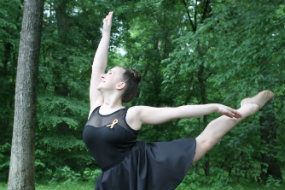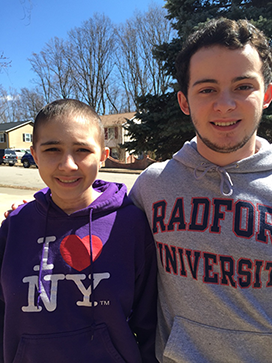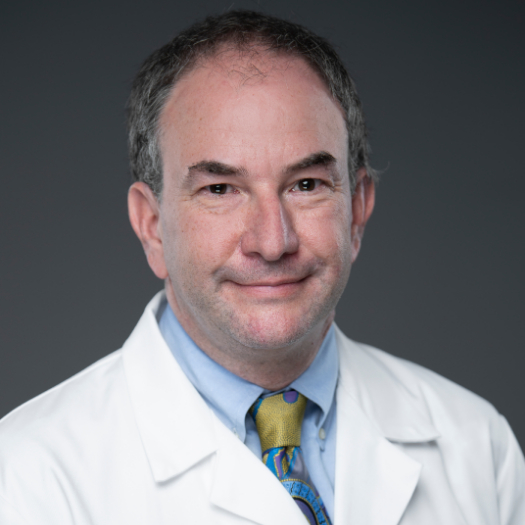
Molly's Story

The mysterious pain began at the end of Molly Barcalow’s eighth grade year and, like a fiery pinball, ricocheted from one part of her body to another, one week after another.
First, she felt pain in the back of her hip. A doctor prescribed a strong painkiller and Molly felt better. Then, the pain felt slung across one shoulder and wrapped around her shoulder blades. The pediatrician turned to a cardiologist who said Molly’s heart looked just fine but came away convinced the pain emanated from her bones.
Molly’s shoulder hurt so badly, she could not stand. An X-ray revealed little more than a new question about her spine.
Undaunted, she joined the rest of her class on a field trip to Europe for two weeks, packing a bottle of painkillers but never needing to take a single pill. Upon returning to Dulles International Airport, however, the pain returned, this time lodged in her left hip. At first, the Barcalows attributed the soreness to Molly sitting for nine hours on the trans-Atlantic flight.
But Molly’s hip did not stop hurting. Over the next two weeks, they visited doctor after doctor.
“They would say ‘if you’re not better in three days, come back,’ ” Molly’s mother, Christy Barcalow, recalls. One specialist who examined Molly for scoliosis didn’t think anything was amiss, apart from Molly being “a dramatic teenager.”
Finally, an ultrasound of her hip revealed an odd finding and led to a more detailed magnetic resonance image (MRI). The abnormal MRI raised worries that Molly contracted an infection in Europe. They tested her hip where the pain was concentrated, and an oncologist suggested they also take a bone marrow biopsy.
Molly was diagnosed with leukemia. She was moved to an oncology ward and underwent a first round of chemotherapy, which eased the aching pain in her hip. The exhausted family took solace in finally having a diagnosis. They braced for Molly’s two-plus years of anticipated treatment. Then, they got “a dreadful call,” Christy says.
“The doctor said when they further tested the leukemia cells, it was this really rare form, hypodiploid acute lymphoblastic leukemia (ALL),” Molly says.
The 14-year-old would need a bone marrow transplant. Molly’s 18-year-old brother, Davis Barcalow, wanted to undergo a test to see if he could be a match before he left for college.
“We spent a week wondering. Then we got another call,” Christy says.
Davis was a match.
“It was the first good news we had,” adds their father, Shawn Barcalow.
First, Molly had to reach certain milestones in her leukemia treatment before she could undergo the bone marrow transplant.
Molly was admitted to Children’s National Hospital one day after Thanksgiving to prepare for the bone marrow transplant. Molly underwent two days of intense chemotherapy and eight rounds of full-body radiation at Georgetown University, mornings and afternoons for four days.
“The transport team was really good to Molly,” Christy says. “She rode by ambulance to Georgetown eight times with different drivers. They were so good and so supportive and so friendly.”
On Dec. 8, Davis went to Children’s operating room for the bone marrow to be harvested from holes at the top of his hips, where your thumbs would be if your hands rested on your hips.
“I am ready to do this. Let’s get it done,” Davis recalls thinking. “I was about to go save a life — at least try to. I was going to do it the best of my ability, no matter the price.”
Christy says: “We have two kids, and both were in Children’s National at the same time on different floors.” Close family friends attended to Molly while Christy and Shawn stayed with Davis in the operating room. Post-harvest, Davis and both parents went to Molly’s room.
“Molly felt pretty good that day. Her blood counts were great,” Christy says. “They warned us they were going to make her very sick and then make her better.”
The day of the transplant has become Molly’s rebirth day. The stem cells Davis donated have become a continuously renewing source of blood-forming cells that keep Molly free of leukemia, says David Alex Jacobsohn, M.D., chief of Children’s Division of Blood and Marrow Transplantation. Dr. Jacobsohn adds that the transplant was especially important in this case because Molly had a very high-risk leukemia and was at higher risk for relapse than many other children with the condition.
Shawn adds that since Molly’s bone marrow transplant was from Davis, she now has a man’s chromosome: If you were to test her blood, it would be male. One of the first tests the team ran was to see how many chromosomes in Molly’s blood were Davis’. If Molly’s own blood returned, it could bring leukemia with it.
Molly spent 42 days in the hospital’s bone marrow transplant unit. Shawn remembers the specialized air circulation system, which pushed air out of her room so no air (or germs) from the hallway could seep in, an essential step to protect Molly, whose immune system was wiped out by the radiation and chemo.
Molly’s visitors had to be older than 12, healthy with current flu shots. “If you brought a game or something, it had to be in original wrapping,” Shawn says. “We wore gloves and used purple wipes to wipe down gifts.”
Christy adds: “A friend of mine came to visit and she brought a soggy, wet Christmas card. Did you know you can sanitize a Christmas card?”
The day Davis’ bone marrow was harvested, he gave a second donation. That enabled lab workers led by Cath Bollard, M.B.Ch.B., director of the Center for Cancer and Immunology Research, to isolate Davis’ T-cells and, in a painstaking process, train the T-cells to detect and neutralize a trio of viruses. Molly received her T-cell infusion on Feb. 23, 2015.
“They said it was like a preventive vaccine that would help Molly after her transplant,” Christy says. “That was the reason we did it. It can’t hurt her, and it was worth a try.”
Molly recalls the T-cells “were in a small syringe they put into the line. They went ‘One. Two. Three. Poof.’
Months of work had been distilled into a milky white substance that, within a few seconds, was coursing through her bloodstream to ward off infection. For a day or so, the T-cells also left Molly smelling like creamed corn, which is the typical smell of DMSO—the chemical cells are frozen in to protect them from damage.
“I couldn’t smell the cream corn,” Shawn says. “I left the room and came back in. It was cream corn.”
Three years later, Christy now reads a plethora of stories about T-cell therapies. “The most surprising thing to me is the attention it’s getting. That’s what Molly had done. For us, we were so lucky to live where we live.”
Molly’s 100 days of isolation after her life-saving transplant ended on March 18.
At last, she could resume dance. Dancing tap, jazz, hip hop and ballet are her passion. She started slowly with one ballet class per week, the least intensive dance style, in lieu of physical therapy. Now, she spends hours each week on competitive dance and devotes entire weekends to dance competitions.
“Because of the rare type of leukemia she had, Molly had an extremely high risk of relapsing. Now, she is essentially cured and enjoys a typical high school student’s life, filled with friends, family and dance,” Dr. Jacobsohn says. “Cases like Molly’s are the reason we Children’s clinicians and researchers come to work every day. Patients like Molly push us to continue to explore new, innovative treatment approaches in order to give patients their lives back. I am so honored and humbled to have played a role.”
Christy adds: “Molly is probably the strongest person I ever met, and she can stay positive in the most difficult situations. She goes with the flow. She’s always been that way. Accepting things as they are, making the best of it and moving ahead.”
A reborn Molly now has big plans for her future. She was accepted at Christopher Newport University in Virginia, and she hopes to go into medicine.
“Before I was sick, I had no idea what I wanted to do. Then, when I got sick, I learned how many jobs there are in a hospital, which I think helped me decide,” Molly says. “I definitely want to work in pediatrics, and I definitely want to work in a hospital.”

